Your cart is empty
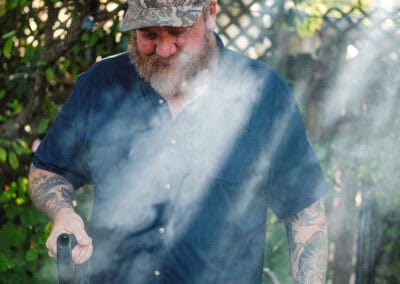

It was easy to see why some consider the landscape barren. There was little obvious life to be seen as we forged headfirst into the stinging front of snow, which had abruptly obscured our view. Even as the icy flurry subsided, harsh winds dragged over dancing shrubs in hostile acknowledgement that this wasn’t an easy place to eke out an existence. Often, however, it takes time to understand the importance of what we see and experience. These rolling swathes of purple moor-grass and dwarf shrub heath, a woven mix of heathers, cotton grass, sphagnums, and a host of other flora, supported a myriad of macro-ecosystems and associated wildlife, above and below the canopy we looked down upon.
The landscape was formed under a series of niche climatic conditions that created one of the world’s rarest upland habitats, but as is true of so much of our planet today, exploitation has rapidly reduced the historic range and adversely affected much of what remains. I was in Northern Ireland to learn about an ambitious, collaborative project, restoring the uplands to their previous abundance of Irish grouse, hare, raptors and waders, which today barely tip the balance between extant and extinct. For a decade, tireless work by the Irish Grouse Conservation Trust (IGCT) had begun to turn the tide of decline, and this year, The Trust was acknowledged, winning the prestigious Purdey Award for Game and Conservation.
The Purdey Awards were established in 1999 by the legendary gunmaker James Purdey & Sons when they took over the Game & Conservation Awards, previously set up by Laurent-Perrier Champagne (UK) in 1986. The Awards are an acknowledgement of the need for positive promotion in the conservation activities undertaken by shooting concerns around the United Kingdom. Their aim is to promote a wider appreciation of the benefits that properly managed shoots can have on the broader environment, biodiversity and species beyond those being pursued as quarry. Every year, the finalists reflect a wide range of outstanding achievements from a diverse array of geographic regions. Since 1999, over 250 shoots around the country have submitted for consideration, presenting conservation initiatives from grouse moors to grey partridge projects, from wildfowling clubs to wild pheasant shoots, with 75 winners sharing more than £100,000 in prize money. Entry requires considerable effort, with a detailed, comprehensive questionnaire establishing a baseline for further query and investigation by a 16-person judging panel, chaired by the Duke of Wellington. As the years have gone by, the Awards themselves have gained the same prestige as the guns produced by Purdey, and today, even being shortlisted for a Purdey Award is a coveted achievement.
There is arguably no name more synonymous with fine English gunmaking than James Purdey & Sons Ltd; indeed, I would venture to suggest that Purdey may be the most famous gunmaker in the world. It’s a position earned over 200 years, through an enviable international reputation. The hallmarks of their craft are founded in the elegance of hand-laid, deep lustring linseed-finished walnut, the intricacy of engraved scrolling, and the refined depth of sumptuous blueing. The epitome of combined extravagance, wonderment and old-world craftsmanship, without question, lies in a pair of hand-made English shotguns. Sought out by kings, queens, and the highest echelons of society, the Purdey name not only carries with it an undeniable draw for those fascinated by the intersection of art and functionality, but basks in an undeniable status that few brands can command.

The first time I entered the Long Room at Audley House in London, I stood for a moment at the doorway, the expanse of this historic place stretching out before me. Seventy-six years before, General Dwight Eisenhower had sat here with the Invasion Committee to plan the D-Day landings. Behind me, I was aware of the gentle background murmur from the font shop as customers swooned over fine leather works, rich tweed garments and selected shotguns and rifles on display. With deliberate, steady steps, I absorbed the flowing history told through oil and canvas, wood and steel, reminding myself that I was achieving a boyhood dream to be welcomed into the most prestigious gunmaker in the world, to tell their story as a writer and photographer. It’s sometimes easy to rush past these moments, but I wanted to take in every second.
“Men do not go to Purdey because they want to economise; they go to him and pay his price with the utmost cheerfulness because they are well aware that by doing so, they will have done for them all the art of smoothbore making can do.” This summary of James Purdey as a gunmaker, printed in the 1880s in Land & Water magazine, reflects the standing and reverence with which the man was held. Just as in 1880, commissioning a gun from Purdey today is far more than a quest for function alone. It is a desire to embrace the heralded Purdey lineage of craftsmanship, which embodies the origin of fine gunmaking, and exists to this very day. When you own a Purdey, you are, in a way, a part of this history: a fabric of gun-owners, keeping hundreds of years of knowledge and skill alive.
“When you own a Purdey, you are, in a way, a part of this history: a fabric of gun-owners, keeping hundreds of years of knowledge and skill alive. ”
Arguably, the history of James Purdey & Sons really started in Scotland. Without the unrest of the Jacobite uprising, James Purdey may have not made the long journey south to London. However, this was not the Purdey who would eventually have his name above Audley House, but in fact his grandfather. Born in 1700, he would name his second son James, who, growing up in the heart of an industrially booming London, would find early employment as blacksmith in the Minories parish — an area around the Tower of London, also known for the production of firearms parts. His third son, born in 1784, would also be named James. It was this James Purdey who would go on to be one of the great English gunmakers. At the age of 12 years, he would mourn the passing of his father, and as such would apprentice as a gun-smith under his brother-in-law, Thomas Hutchinson, for seven years.
James Purdey, the Founder — as he would eventually be known — went on to hone his craft under the watchful eye of Joseph Manton, a man often referred to as the King of gunmakers. Purdey said of Manton, “But for him, we should all have been a parcel of blacksmiths,” and it is without question that Manton’s guiding principle of “endless attention to every detail” was carried forth into each gun stamped with the Purdey name from the first day.
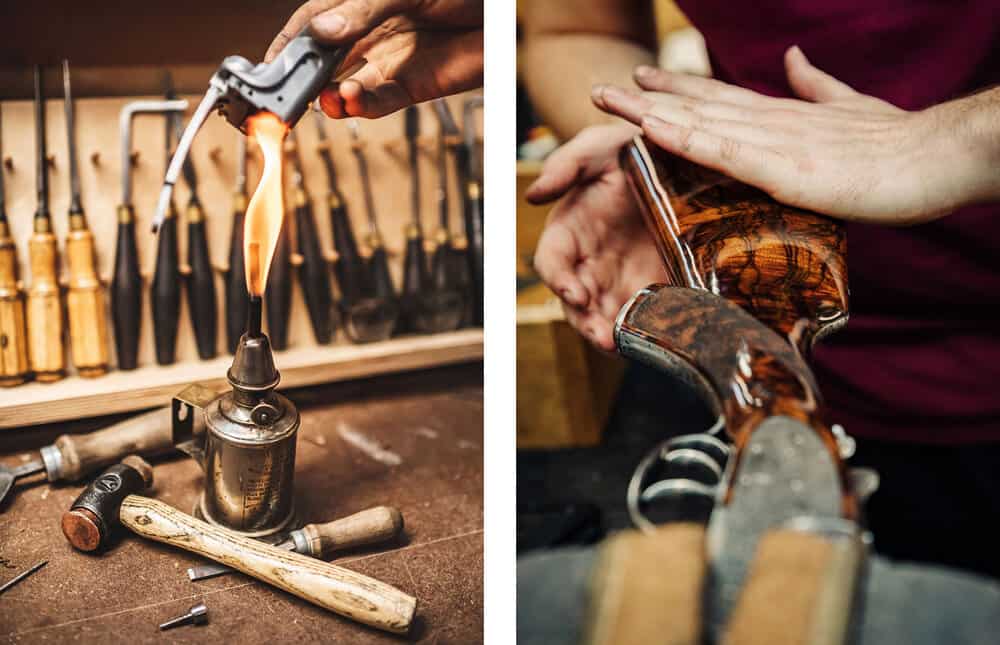
In 1814, James Purdey established his own company and began forging a path to greatness that few manufacturers would ever match. It was a time of turmoil and war in the world. In the same year the company was registered, British forces were laying siege to Washington D.C., eventually capturing and burning the White House on August 24th. Today’s iconic white building was painted as such to hide the scorch marks scarring the walls. Napoleon was still a year away from defeat at the Battle of Waterloo, and The Times of London newspaper saw the first automated printing, operated by steam-powered presses. The evolution of gun design was firmly in the epoch of the flintlock, although it would be about to enter a period of transition with Forsyth’s first attempts of percussion in 1807. The demand for Purdey’s guns continued to grow, expanding from just 6 in the first year to 165 a year within a decade.
Although probably most well-known for his shotguns, James Purdey had a deep-seated fondness and fascination with rifles, manufacturing 1,400 muzzleloaders in the early years of his business. Demand for rifles continued to grow as the British Empire expanded through Africa and India, and as Queen Victoria’s very public love of the Scottish Highlands and deer stalking encouraged an upsurge in interest. The advent of the double rifle, now firmly associated with dangerous game, evolved from a period before repeating rifle design and with origins in the Highlands. At the time, it was common practice when stalking deer to carry two rifles, offering rapid deployment of a second shot should the opportunity arise. Purdey overcame and perfected the complexities of barrel convergence when building double rifles, producing his first in 1827. They quickly became a common sight in pursuit of red deer. Later, it was found that the reliability of the design and quick second shot endeared double rifles the most to hunters of dangerous game.
James Purdey would leave an indelible mark on the history of rifle manufacturing, engraved into the very core of our vocabulary with the introduction of the Express Rifle in 1852. Muzzleloading rifles had long suffered from bullet stripping when attempting to gain increased velocity and accompanying downrange energy delivery. As a result, those who sought more punch had to be content with large bores and slow projectiles. Given velocity limitations, the only real way to increase impact energy and terminal effectiveness was to crank up the weight and drive a bigger hole through the intended quarry. Deliberating this issue, James Purdey experimented by reducing the number of rifling grooves, cutting just two wide slow twists, turning one full rotation in six feet. A purpose-made conical projectile, designed with two corresponding ‘wings,’ allowed for easy loading. In the advertising spiel, the rifle was said to be “like an express train,” and hence the term Express Rifle was born. This died out with the evolution to breech-loading guns, but we still see “Express” used in vernacular to this day.
In 1877, the business changed its name to James Purdey & Sons to reflect both Atholl and James Purdey III joining the company. It would be impossible here to recount all the intricate details of Purdey’s history. To portray the stories of dueling pistols, the development of the Wem ejector system, the construction of sniper rifles in World War I, the creation of the Highland Handle for the Royal Flying Corps, or the design lineage for Purdey’s over and under could not be achieved with any justice without running to many hundreds of pages. For those intrigued by the depth of heritage, a detailed, meticulous account can be found in the book Two Hundred Years of Excellence, by Donald Dallas, to whom I owe a debt of thanks for the company history I have presented here.
The Purdey of today has changed and adapted, but at the company’s core remains the beating heart of what James Purdey built. Much of the world we live in now has cast aside the burden of human capital investment. Globalization has driven a web of time zone arbitrage, labor cost outsourcing, and hyper-mechanisation. We want 24-hour production cycles driving high-volume output and market capture, eliminating every sliver of what is seen as inefficiency. Any way in which a task can be achieved faster and more cost-effectively should be pursued. What is lost in this endeavour isn’t tangible in the dimensions of life we can explain with physics. To hold a Purdey, brought into existence in the hands of skilled craftsmen, forged with hundreds of years of experience, defines a holistic endeavour. What it means will be different from person to person, as the emerging soul of such a gun goes beyond the mere grain of wood and curves of steel. Just as love is a human construct, one we cannot truly define beyond the neurochemical surges in dopamine and serotonin, a gun forged from the workbenches of Purdey is more than its component parts. It consumes you in wonder and awe.
Walk among the craftsmen and women today, and in many respects very little seems to have changed since those early, founding years. The rows of benches have witnessed decades of gunmaking , with the craft residing in the minds and hands of people. Weathered fingers still work oil into the swirled grains of meticulously selected Turkish walnut. Flames still lick carbon black faces to guide the fine adjustments of fitting. These old-world skills, honed for a modern era, have carried Purdey’s reputation through the ages. Today, a matching pair of Purdey shotguns is the epitome of perfection when it comes to selecting a gun fit for a day’s driven shooting. Is there truly any finer accompaniment to the richness of purple-clad heather, the heritage of tweed, and the agile, effortless speed of a red grouse than the fine, seductive lines and finish of a Purdey? Many would say there isn’t.
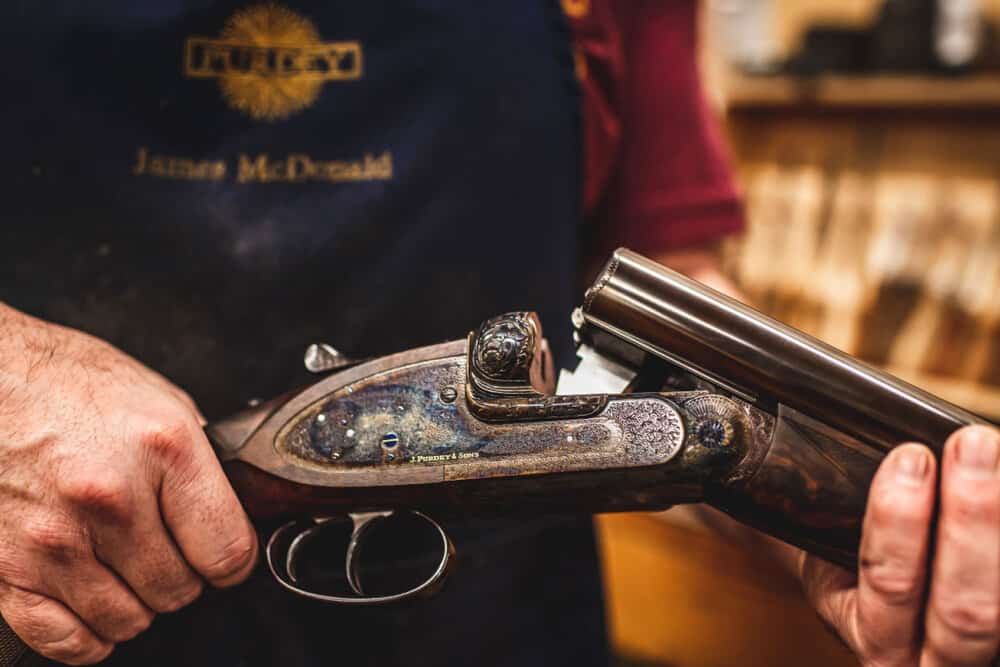
James Purdey & Sons have no need to differentiate themselves when it comes to making shotguns and rifles; that standing is carved into the very history of gun evolution. However, the inception of the Purdey Awards made a clear statement of the importance of harbouring a future where our environmental impact and role in conservation as a community sits at the forefront of our minds. The 2020 Gold Purdey Award winner defines this very attitude.
Just a week after attending the award ceremony at Apsley House in London — a rather grand location, boasting the address No. 1 London and the residence of the Duke of Wellington — I made the quick hop over the Irish Sea from Scotland to meet gamekeeper Alex Rodgers and Director of the Irish Grouse Conservation Trust (IGCT) Adrian Morrow. I wanted to find out more about the Trust, their history, and the conservation work they’re currently undertaking.
Being from a fellow Celtic nation, the landscape of Northern Ireland had a familiar feel for me. One striking difference from the Angus Glens of Scotland I call home was the apparent lack of investment in landscape-scale conservation. The future written here was one defined by extraction and maximized agricultural output. I had limited understanding of the historical context behind these observations, and I was eager to expand the realities of my initial impressions.
I had briefly met Alex in London just prior to him being presented with the Gold Purdey Award for Game & Conservation. Given the burden of responsibility on his shoulders, as the only full-time gamekeeper in Northern Ireland, I was surprised by how young he seemed. At just 26, he had taken up his current position three years previously, undertaking one of the most ambitious restoration and naturalization projects in the country. By his own admission, he had limited formal education, leaving school at just 15, but what I experienced over the following days was someone deeply enchanted by the science of upland management, harboring a depth of care, concern, and understanding that is rarely attributed. It was obvious that he was absorbed in a passion to create a landscape better than the one he came to. Over the following two days, between conversations with Alex and Adrian, I began to build a picture of the environmental decline that the IGCT, along with others, was working so hard to reverse.
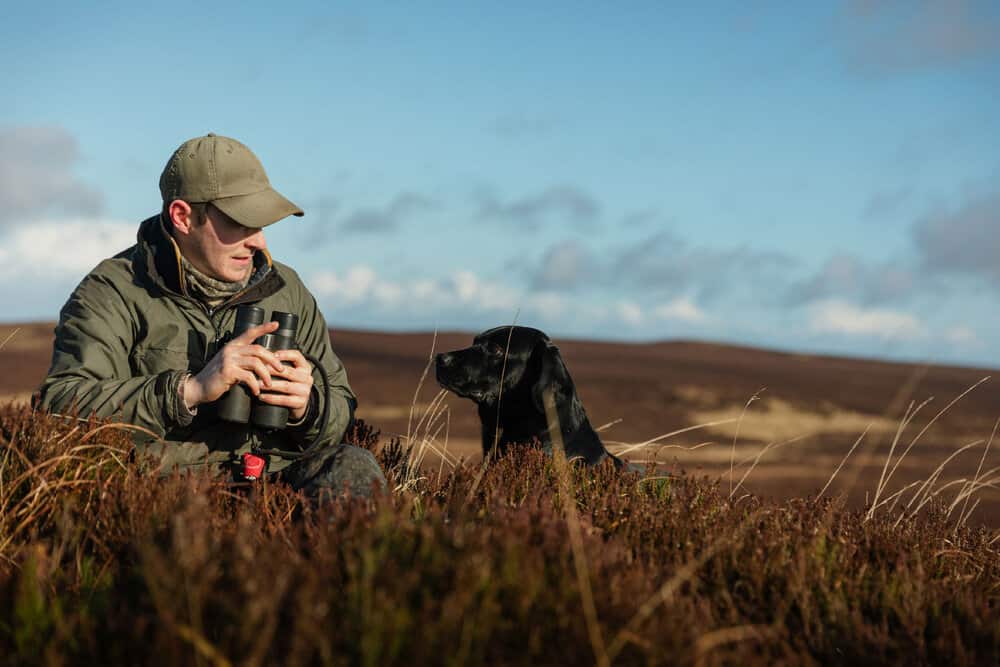
It has been suggested that the smoldering catalyst responsible for the degradation of a once-thriving ecosystem in Ireland was an unintended consequence of a series of historic Land Acts, breaking up large estates into much smaller, less economically viable farms. As a result, much of the traditional sporting management gradually disappeared, and in the 1960s, Northern Ireland lost its last full-time employed gamekeeper.
Around the same period, the European Common Agricultural Policy (CAP) was enacted, focused entirely on increasing food production. These subsidies were paid on a ‘per head’ basis, encouraging the overstocking of livestock across the Irish countryside. Cows and sheep were soon being over-wintered on the land, breaking the more sympathetic shifts from upland grazing in summer months to lower pastures over winter. A flowing rhythm practiced by generations cognizant of environmental recovery was broken. The collapse in ground-nesting bird populations quickly followed, but it wasn’t until the 1990s that the system was reformed, with payments made on a land-based structure instead.
From the 1970s, almost all land management in Northern Ireland had ceased, and the dominant presence on the hills was sheep, facilitating an era of mass overgrazing. With that came the drainage of the moors, cutting deep channels known as grips through the peat to accelerate water runoff from the hills, lower the water table, and increase potential pastures. I have seen this across many parts of Scotland and England — a land-use adaptation that was actively encouraged by the government through subsidies. We are now suffering the consequences, with hydrological shifts and associated ecological impacts, downstream flooding, and the direct risk to ground-nesting birds, forced to negotiate this lattice of death traps for their offspring. Liming of heather was also widespread, shifting the pH of the soil and encouraging the growth of grass.
This period was also marred with vast swathes of poorly planned, inappropriate tree planting, not just in Northern Ireland, but across the United Kingdom. On Glenwherry, 2,500 acres of fast-growing conifers had replaced what was once upland dwarf shrub heath and peat bog. Not only did this destroy the existing, fragile and globally significant habitat, but long-term studies have now highlighted the impact of lowered groundwater levels and increased peat scouring, along with associated carbon loss resulting from the drier, exposed land inside the forests. To suggest that the outlook was bleak is to underplay just how much work would be required to undo this damage.
The project Alex is a part of evolved from the 2003 Irish grouse survey, which estimated a total population in Northern Ireland of just 200 pairs. That same year, the Northern Ireland Environment Agency listed the Irish grouse (lagapus lagapus hybernica) as an endangered species. Although still contested, according to research carried out by Dr. Barry McMahon from University College Dublin, the Irish grouse is thought to have sufficient genetic variability to be classed as a separate species from the mainland red grouse (lagapus lagapus scotia). There is concern that further declines will continue to increase the risk of potential genetic bottlenecks.
Despite the dire outlook, no funding or help was made available to curb the deleterious effects of current land use, and this prompted the owner of The Antrim Estates, Lord Dunluce, to take action. Along with a small number of like-minded souls, the Irish Grouse Conservation Trust was established. As a charitable organization, with founding members all in their twilight years, their ambition was noble, knowing that they would likely never reap any benefits for themselves. This was a quest to create a better future for the generations that followed.
When the project at Glenwherry Hill began in 2008, the ten-year baseline population for red grouse was just two to three pairs. Game records from the 1920s paid tribute to the ground being one of the most productive grouse moors in the country, with 100 brace days a regular occurrence. Today, the estate spans 7,000 acres, but only 1,000 acres of this is considered suitable grouse habitat. There are several designated sites within this territory, including an SPA (Special Protection Area), ASSI (Area of Special Scientific Interest), and AONM (Area of Outstanding Natural Beauty).
The first and most immediate action was to begin a structured system of predator control. This would run alongside planned habitat improvements projects, headed up by the first gamekeeper to grace the land in 50 years. Now, this sat on Alex’s shoulders: implementing a monitored program focusing heavily on the control of foxes through legal, regulated snaring and shooting, as well as extensive corvid control and trapping of rats and stoats. The current body of existing research highlights the importance of predator control, not just for waders, but for all ground-nesting birds, including raptors. Partnered monitoring of hen harriers with the Northern Ireland Raptor Study Group accounted for a 95% nest failure due to predation across Northern Ireland.
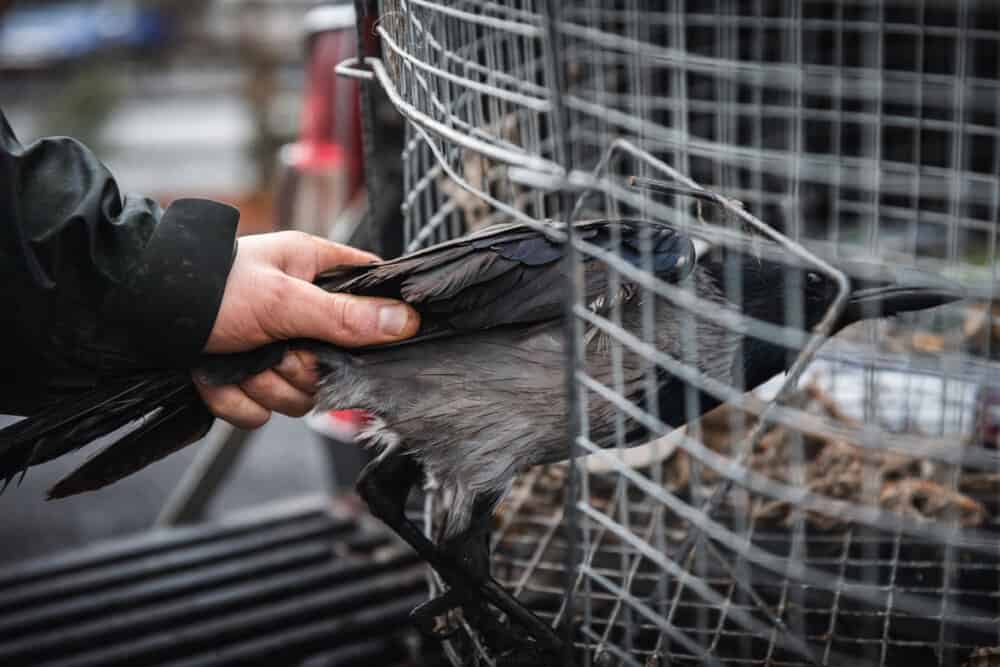
The positive effects of controlling predators are being borne out in the evidence, with the IGCT providing a transparent collation of surveys and data under the collaborative Glenwherry Hill Regeneration Partnership, which includes the Agri-Food and Biosciences Institute (AFBI) and the Royal Society for the Protection of Birds (RSPB). This has allowed an adjacent 10 km2 area, currently being studied for breeding wader success, to come under the same umbrella of predator control and improved landscape management. Independent research has already shown benefits for a host of bird species, including merlin, hen harriers, golden plover, lapwing, meadow pipits, skylarks and the Irish hare. In 2017, the first curlew chicks fledged here in twenty years, with three chicks leaving their nests. One year later, four chicks successfully fledged. Given the bird’s status as the species of greatest concern in the United Kingdom, the lessons from this success carry great importance. For the Irish grouse, a similar story unfolds, with the 2019 counts on Glenwherry hill coming to 90 pairs.
“Predator control is, however, just one element in their ambitious, structured approach to restoring the once abundant wildlife and thriving ecosystem. Restructuring of land management principles and practices has also been crucial.”
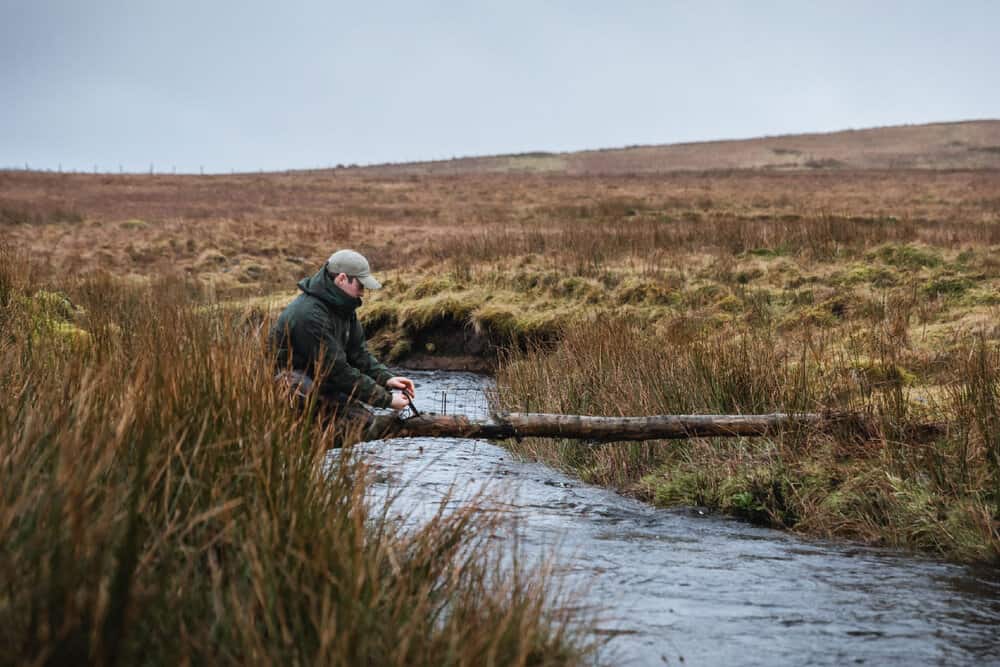
Predator control is, however, just one element in their ambitious, structured approach to restoring the once abundant wildlife and thriving ecosystem. Restructuring of land management principles and practices has also been crucial. The first step in this was blocking drains previously cut across the landscape, allowing the regeneration of sphagnum coverage through re-wetting of the land. Grazing pressure was also evaluated, balancing the optimal stocking density of livestock to complement heather regeneration through grass suppression, and economic farming value. This led to a shift away from flocks of texel in favor of Scottish blackface sheep. A radio-collaring project by the College of Agriculture, Food and Rural Enterprise (CAFRE) found that the dispersed nature of their grazing habits more efficiently and sympathetically complemented the landscape. According to Professor Jim McAdam of Queen’s University Belfast, this combination of strategically implemented grazing, combined with rotational muirburn, is “key to retaining and sequestering more soil carbon and enhancing biodiversity.” Further,“the Glenwherry project is underpinned by sound scientific vegetation and habitat mapping to implement a grazing and burning strategy, which has resulted in a continuous, dense vegetation cover which will be resilient to climate change, have a reduced fire risk, retain biodiversity and sequester more carbon.”
The most visually transformative change was ongoing during my visit, with the removal of a 50-hectare block of conifers that had been planted on deep peat and become entirely un-economic, while simultaneously crippling the immediate and surrounding ecosystem. Jim McAdam explained that “needle drop and shade created by the conifers resulted in highly degraded habitat with very low biodiversity and no peat growth.” The site will be used to test regeneration methods, determining the best approach for future projects. Jim further explained that experience from other, similar sites showed that the plantation removal would quickly see improvements in peat accumulation and carbon sequestering as an active bog is allowed to re-establish.
As I came to the end of my two days with Alex, it seemed inconceivable that the landscape had been allowed to deteriorate so far. A string of poor, uninformed, ill-conceived landscape-wide measures had suffocated this place. It was heartening to see the level of collaboration between NGOs on the project, and the willingness to adopt management tools such as predator control. We don’t have to look far to understand the implications of removing this hands-on management. The independent research and records bare evidence to a future without it, by highlighting the dire consequences of past mistakes.
The legacy of James Purdey & Sons lies not only in the fine guns and accessories adorning their London showroom, but also in their willingness to support and elevate people and organizations that are genuinely investing in a better future. By rewarding those who are willing to embrace collaborative, science-informed approaches to landscape-scale management, we stake a clear marker as to the community we wish to build. This community is the true legacy.
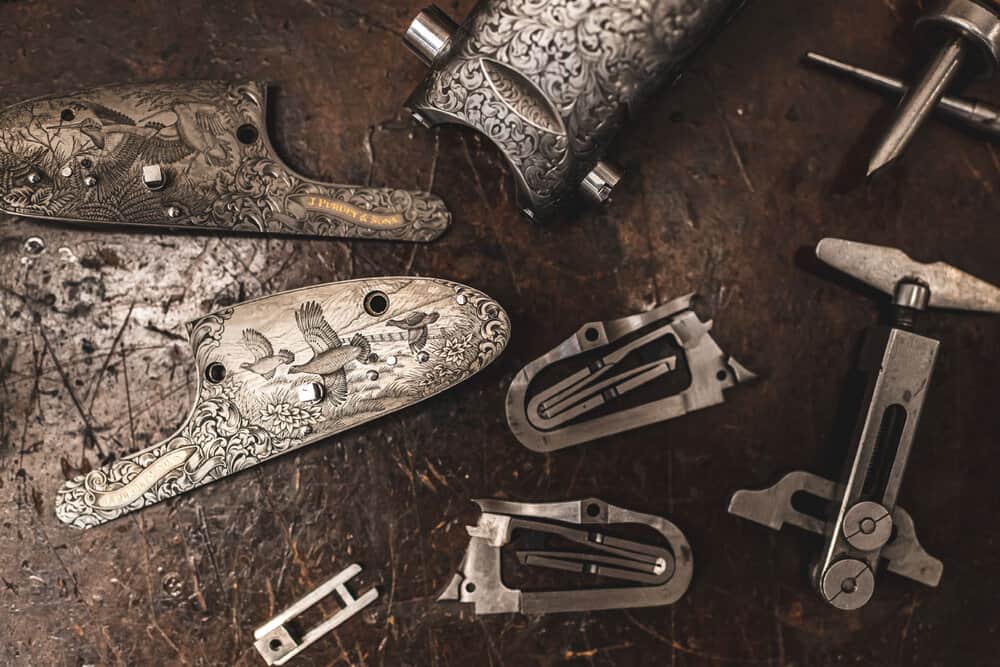
Related Stories

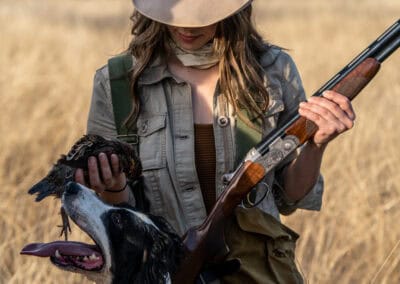

Latest Stories


